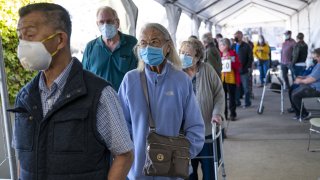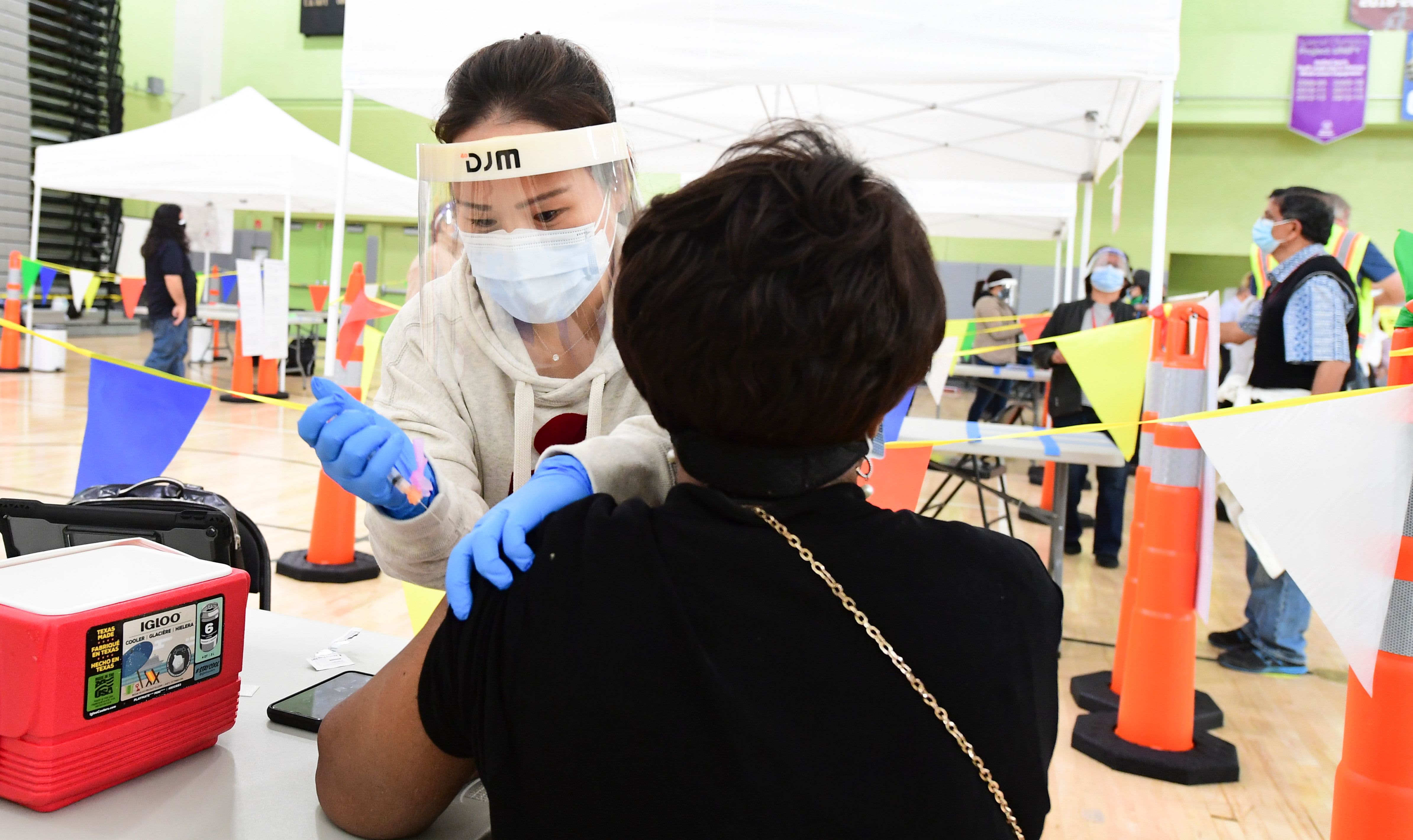
Teresa Parada is exactly the kind of person equity-minded California officials say they want to vaccinate: She's a retired factory worker who speaks little English and lives in a hard-hit part of Los Angeles County.
But Parada, 70, has waited weeks while others her age flock to Dodger Stadium or get the coronavirus shot through large hospital networks. The place where she normally gets medical care, AltaMed, is just now receiving enough supply to vaccinate her later this month.
Parada said TV reports show people lining up to get shots, but “I see only vaccines going to Anglos.”
“It’s rare that I see a Latino there for the vaccine. When will it be our turn?” she said.
Gov. Gavin Newsom has repeatedly called equity his “North Star" for vaccinating a diverse state of nearly 40 million. He partnered with the federal government to set up mass vaccination sites in working-class neighborhoods in Oakland and Los Angeles. And it's a big part of why he tasked insurer Blue Shield with centralizing California's patchwork vaccine system, asking the hospital chain Kaiser Permanente to assist.
Yet officials at community health centers that serve as the safety net for the poor in the U.S., focused on health equity, say they are not receiving enough doses for their patients — the very at-risk residents the state needs to vaccinate.
In California, nearly 1,400 such centers offer free or low-cost services to about 7 million people, many in communities with a higher concentration of low-income families and few providers who take Medicaid, which is known in California as Medi-Cal. Many of their clients speak a language other than English, work long hours, lack transportation and want to go to the medical care professionals they trust.
Dr. Efrain Talamantes, chief operating officer for AltaMed Health Services, said it was disheartening to watch initial doses go elsewhere while his patients continued to test positive for the virus.
“There is a clear disparity every single time there’s a resource that’s limited,” he said.
Get a weekly recap of the latest San Francisco Bay Area housing news. >Sign up for NBC Bay Area’s Housing Deconstructed newsletter.
Most states are grasping for ways to distribute limited vaccine supply, resulting in a hodgepodge of methods in the absence of a federal plan. Tennessee is among the states dispensing doses based on county populations, while California allocates them by eligible groups including teachers and farmworkers. The free-for-all has allowed people with the most resources to score scarce vaccinations.
Dr. Kirsten Bibbins-Domingo, chair of the Department of Epidemiology and Biostatistics at the University of California, San Francisco, said it seems obvious that the best strategy to get vaccines to hard-hit communities is to turn to the places where residents already get care. But big-box administrators tend to think of community health centers as less efficient because of their smaller size, she said.
“We’re not very imaginative in the way we deliver vaccine efficiently. Our only creative solutions are to build mass vaccination sites, and maybe give people preferential access to those sites,” she said.
As California has ramped up vaccination efforts through mobile and pop-up clinics at churches, work sites and schools, state data show how relatively few shots have gone to Latinos and Blacks compared to their populations.
African Americans have received 3% of vaccine doses while they make up 6% of the state. Latinos, who make up 39% of the state, have received 17% of doses.
Blue Shield officials say they plan to keep open health centers that are already administering vaccines, but the clinics worry they won't get enough doses.
State vaccine spokesman Darrel Ng said the governor's plan for equitable vaccination includes setting aside vaccines for “disproportionately impacted communities and ensuring that providers who serve these communities are part of the network." He said in a statement that it includes sending mobile clinics to places like Black churches.
Andie Martinez Patterson, vice president of government affairs at the California Primary Care Association, said while large-scale health systems can vaccinate people quickly, they likely won’t reach the targeted residents.
Community health centers have worked hard to persuade their patients to take the shot, said Alexander Rossel, chief executive of Families Together of Orange County, adding his center has inoculated 95 percent of its patients age 65 and over.
Health centers watched in dismay as vaccine for health care workers initially went to larger hospitals in December. Then they watched as more affluent, internet-savvy English speakers with time to navigate web portals and drive long distances for appointments flocked to inoculation arenas.
When Orange County started opening large-scale vaccination sites in mid-January, community health centers asked for doses too, said Isabel Becerra, chief executive of the Coalition of Orange County Community Health Centers.
“We don’t have transportation. We don’t speak English. We don’t understand the technology you’re asking us to use to register and get in line. So, can we vaccinate the 65 and older population in the comfort of their own facilities?” she said.
Jodie Wingo, interim president of the community health association for Riverside and San Bernardino counties, said member clinics were scaling up to inoculate more of their 500,000 patients. But now they’re receiving only a few dozen doses at a time.
“Everybody is working toward equity, yet it doesn’t look equitable. At all,” she said.
AltaMed, in Los Angeles and Orange counties, recently started receiving 3,000 doses a week from the two counties. The supply should allow clients like Parada, who is originally from Mexico, to receive her vaccine this month.
AltaMed will send a vehicle to take her to a clinic for the shot that will protect her when she heads out, double-masked, to shop for the family.
“I’m the one who has to go out. I have to protect myself,” she said.



